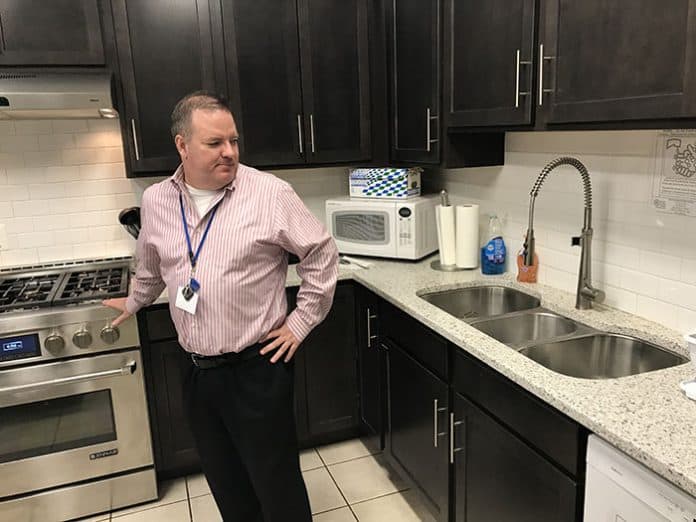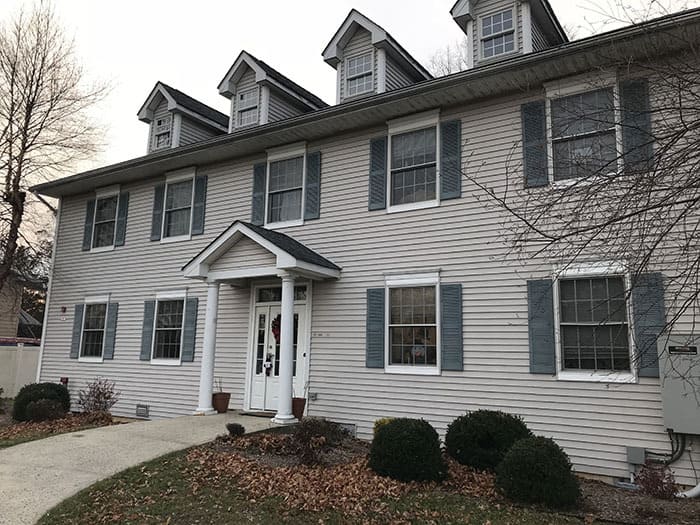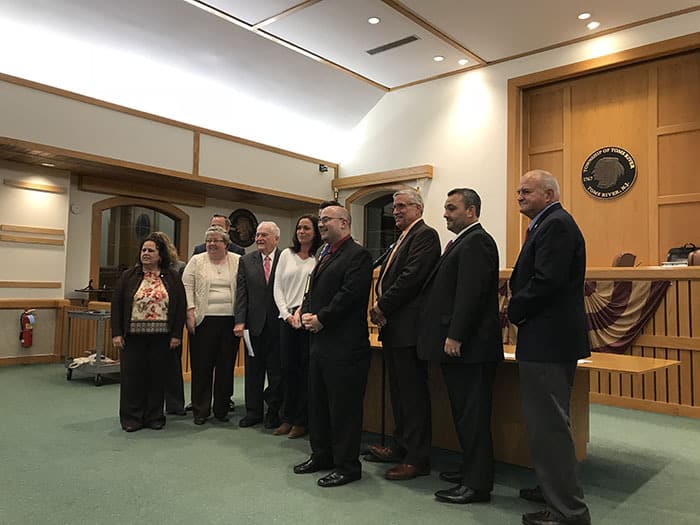
TOMS RIVER – The front of the house looks like a very nice, very large two-story home. It just happens to have a lot of parking spaces and another office building behind it.
Inside, you’ll find a large, open dining room and kitchen with multiple appliances. A living room area had holiday decorations up at the time. The bedrooms are all upstairs. Everything is like a house, just bigger.
This was done by design. It’s meant to feel like a home. Even the lack of signs on the property let it fit in with the neighborhood. This is Ocean’s Harbor House, a place for youth who are homeless or in crisis. Despite the name, they also serve Monmouth County.
This particular building houses the Supervised Transitional Living Program. It is meant to provide security and structure for youth ages 16-21, as they learn the skills and get employment to become independent adults.

There’s another building, elsewhere in Toms River, for children as young as 10. This location is meant to provide shelter while an appropriate placement is found. In both places, the youths and their families are given counseling in addition to the children having a safe place to be.
“The children are here because their parents are incapable of caring for them,” executive director John Piscal said.
What he’s seeing in this job is that it’s usually not the child’s fault. They are just kids in a situation they can’t control.
Sadly, he’s noticing something that is happening nationally, but particularly around here: an increase in the number of “heroin orphans:” Parents who are still alive but have fallen into addiction and can’t be responsible for their children. Over the course of Harbor House’s 30 years, the heroin epidemic has been the biggest change. It has become the main reason that the kids are here, he said.
The state estimates that there are 60,000 grandparents in New Jersey who are primary caregivers. Some of them are not physically or emotionally able to take care of a young person who is going through a hard time, so the kids wind up in places like Harbor House.
“We think it’s way more than 60,000,” he said. There is a stigma associated with needing help. People don’t want to admit it, so they don’t make it known. They should know that it’s far more common than they realize, and that there’s nothing wrong with asking for help.
The children come to them from all walks of life, and all different levels of independence. They are thrust into new surroundings, so Piscal said the staff works to give them a sense of normalcy. They have chores around the house. They eat family-style around a dining room table.
“We’re big on giving them ownership of the house,” Piscal said. There are monthly meetings, and they are given chances to voice their opinions.

They are not housebound. They go out as often as they can, to the BlueClaws, Six Flags, the beach or the movies just like any other kids.
But summers are hard. Holiday breaks are hard. These are the weeks when they don’t have the routine of school, seeing their friends, hanging out and talking at their lockers.
“You’d never see a kid so excited to see the first day of school,” he said.
Some of the youth are referred to Harbor House by school counselors, teachers or police officers who see a kid in need of help. Sometimes, a kid will call and ask for help.
In addition to making sure the youths’ physical needs are met, there are trained counselors working the house. Because of the nature of the business, they can’t use volunteers.
As a nonprofit, they are continually open for supplies, monetary donations, and even gift cards. Go to OceansHarborHouse.org and click on “Ways To Help” for more information.







